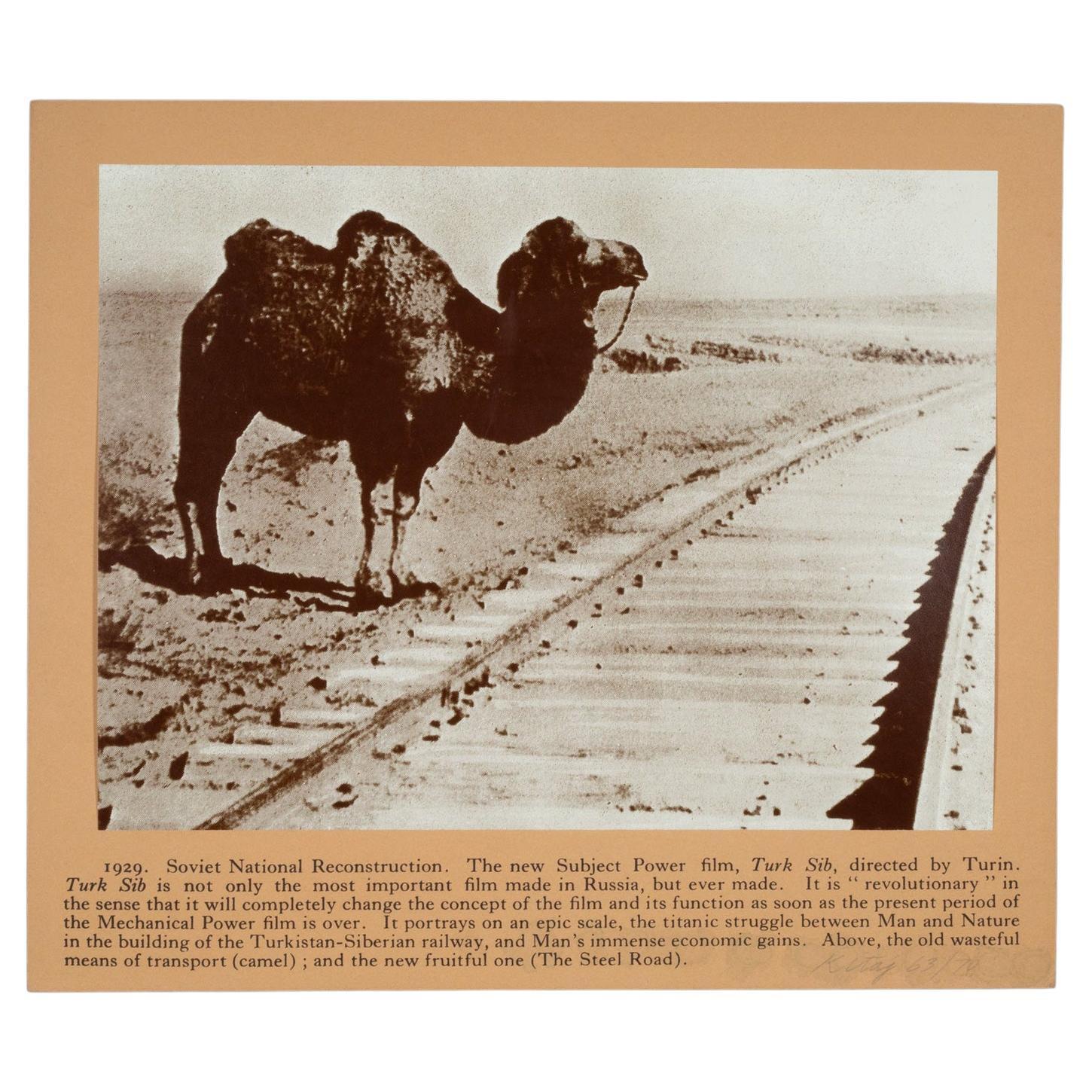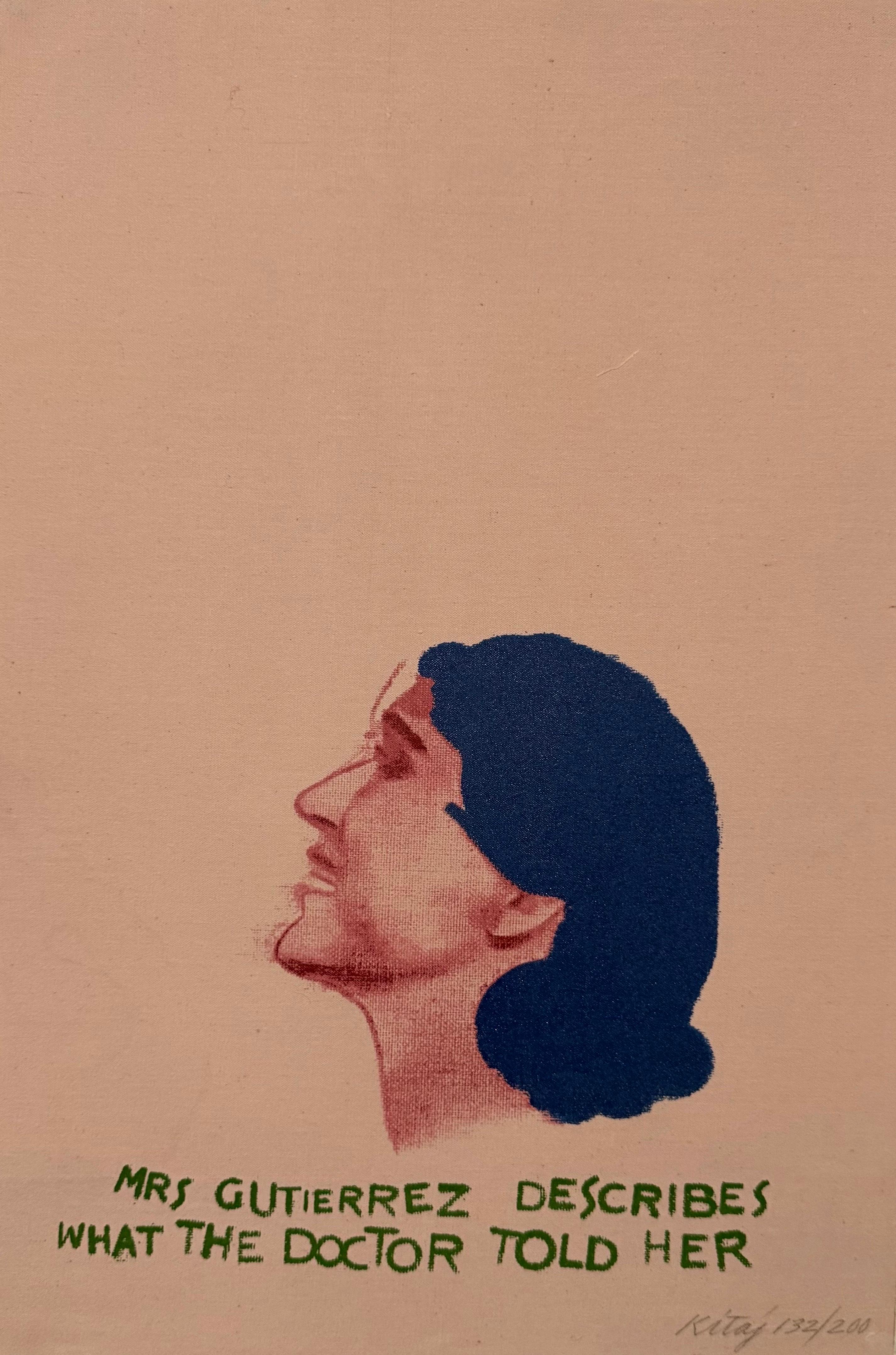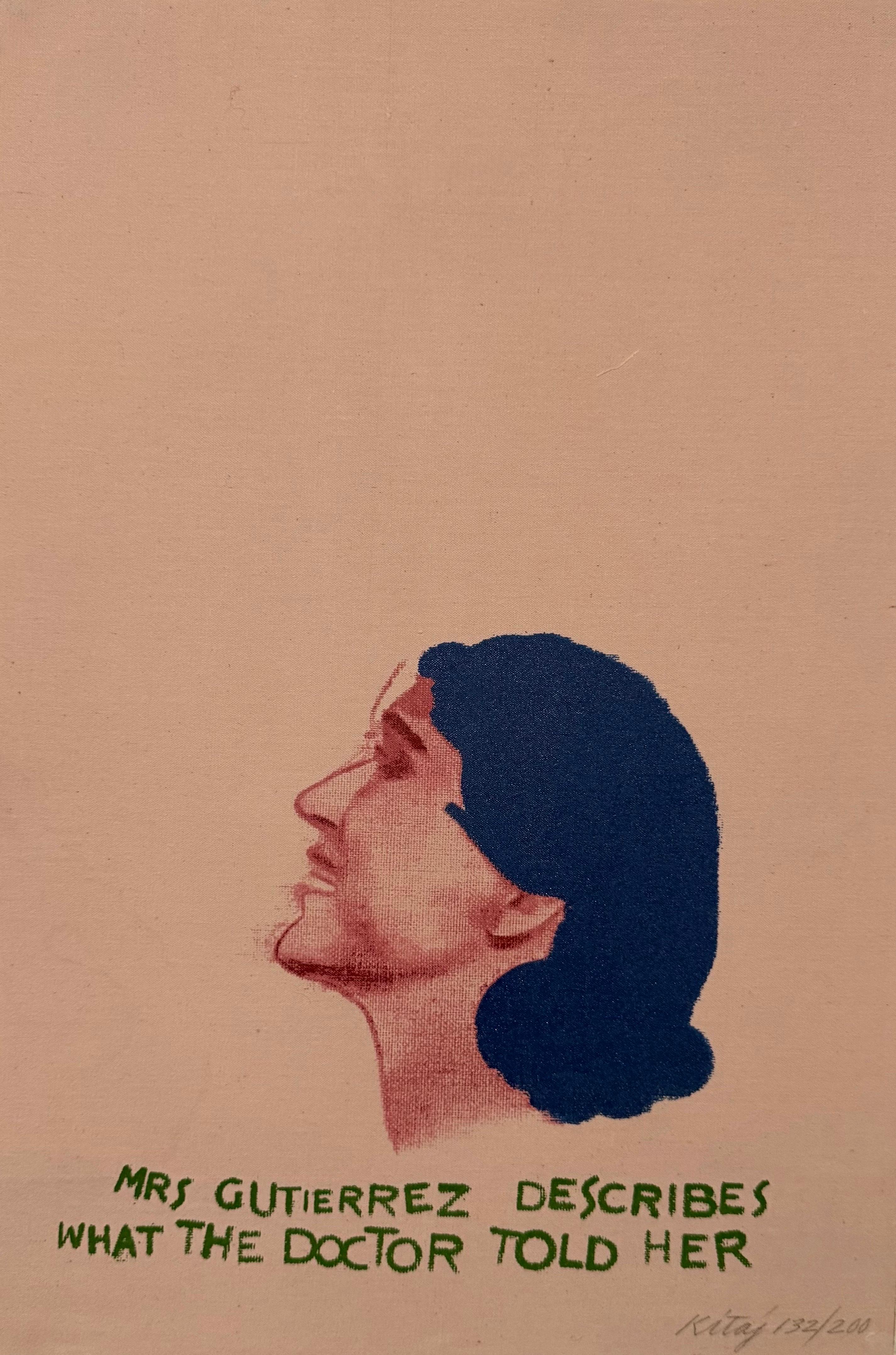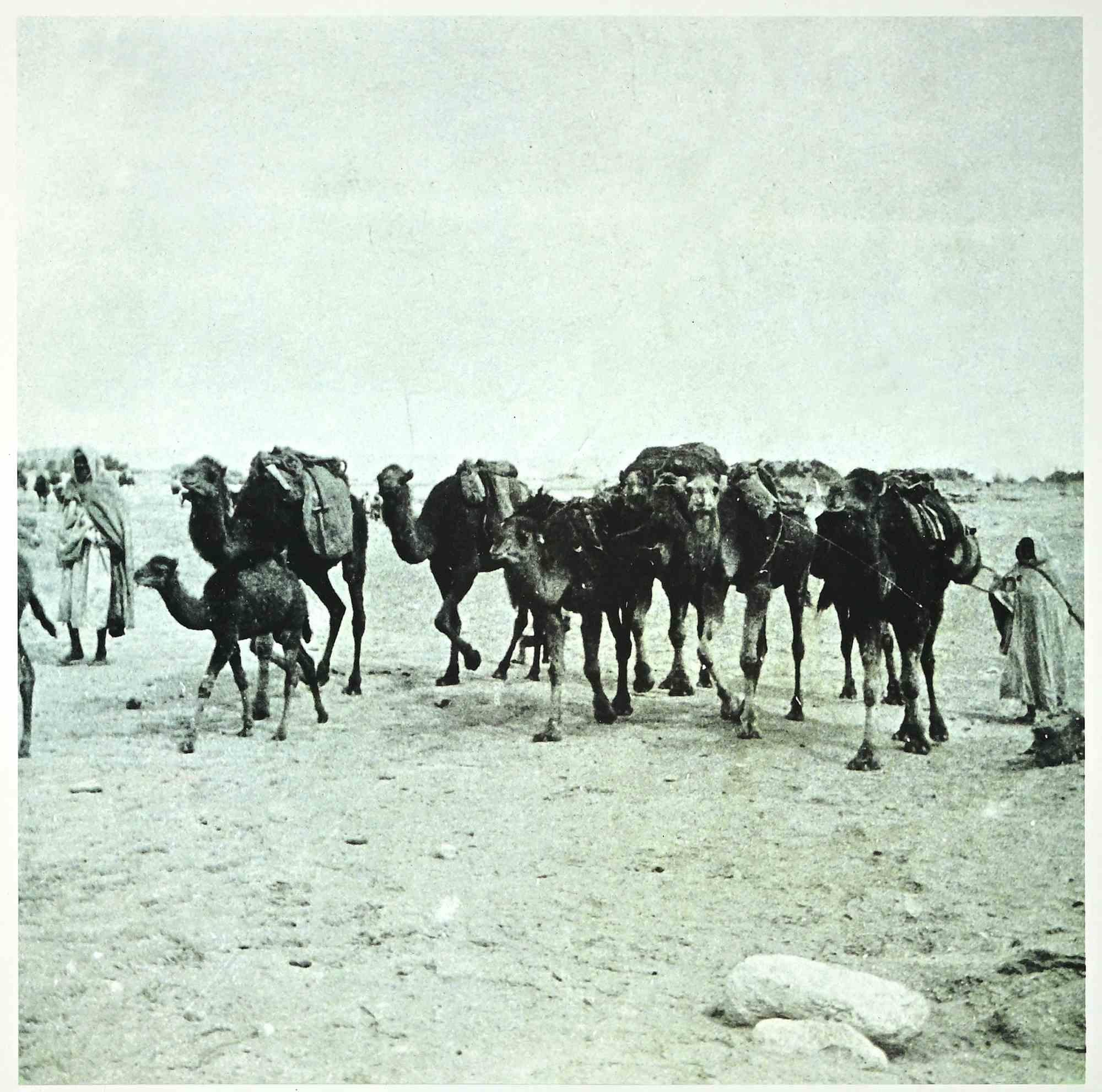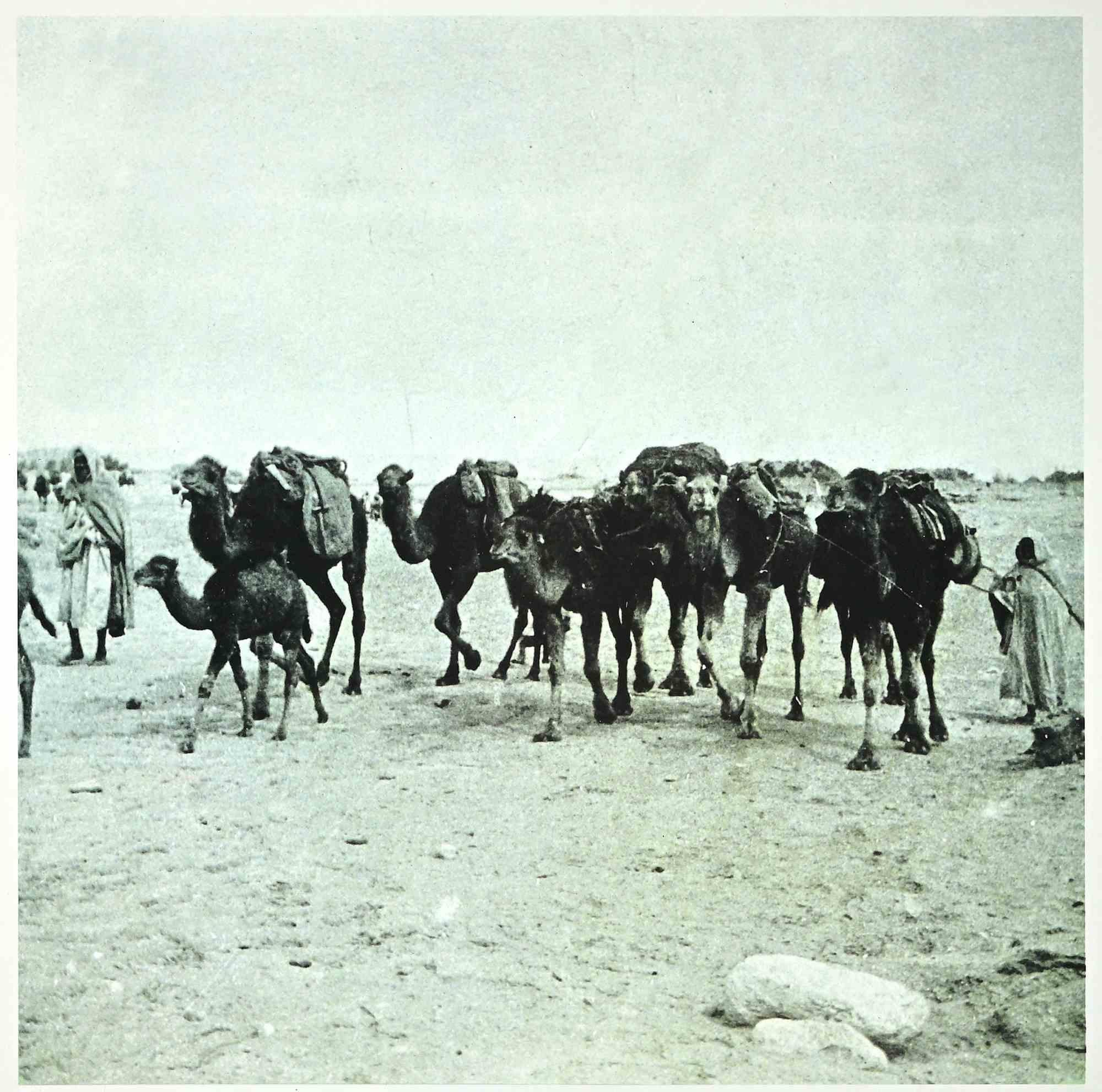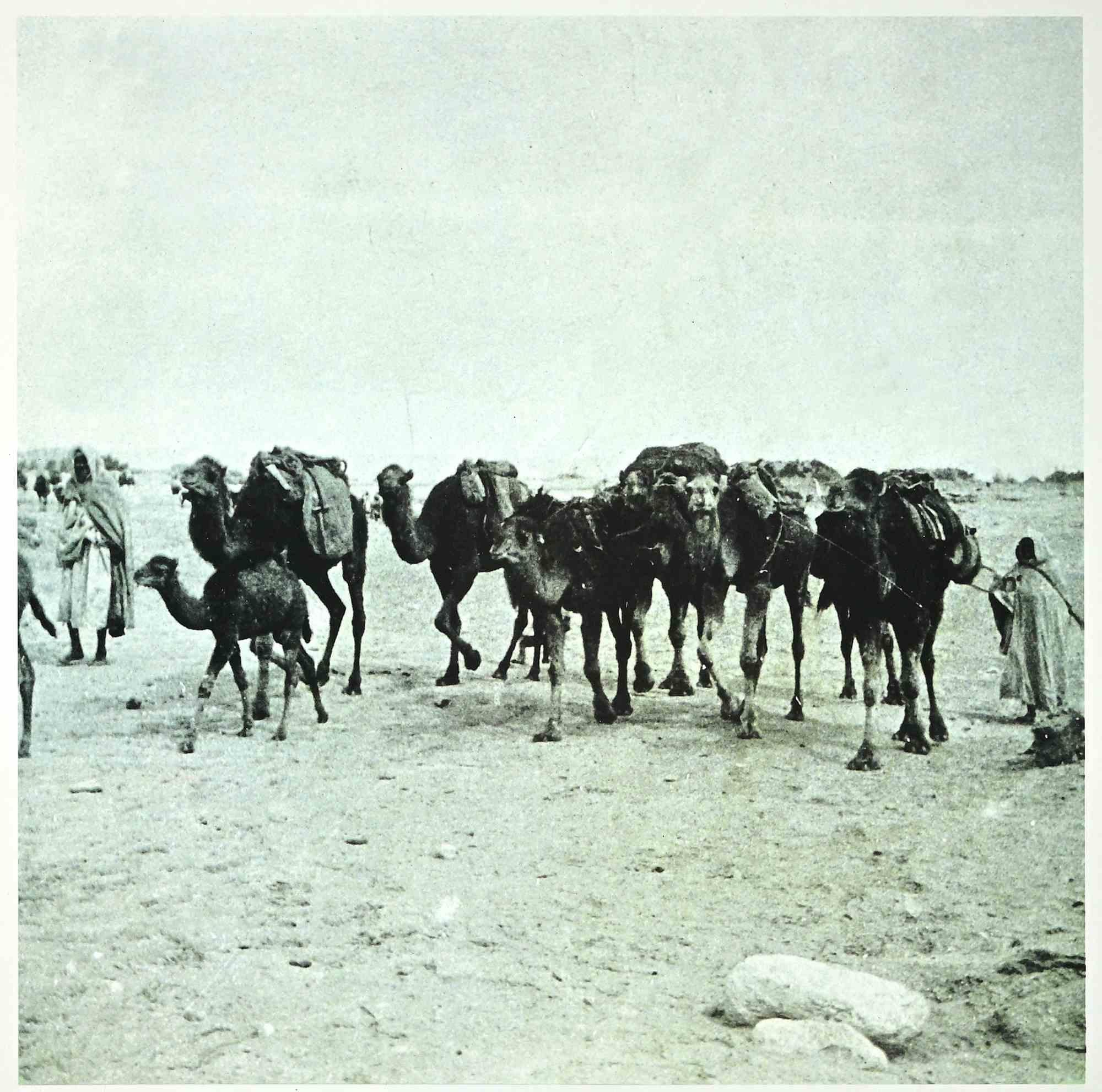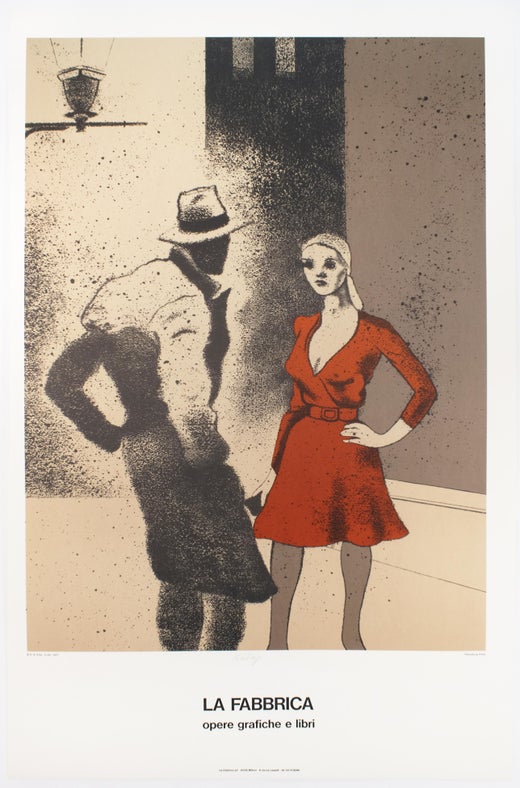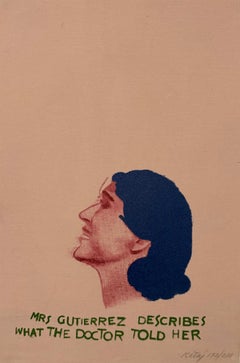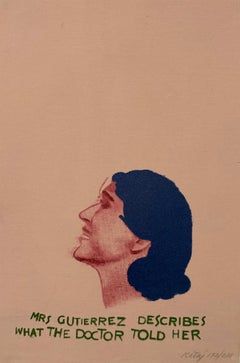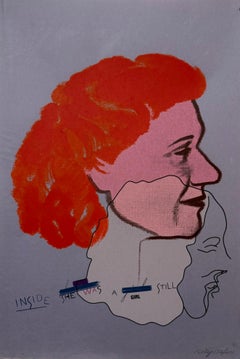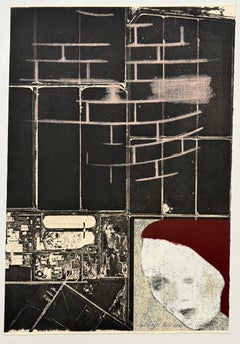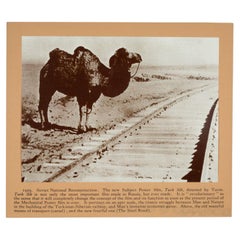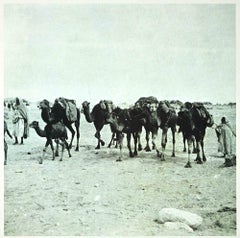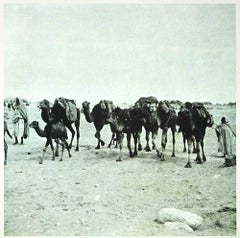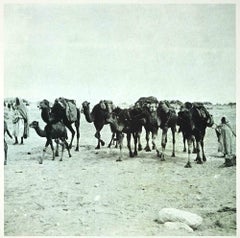Items Similar to R.B. Kitaj Screenprint Collage Hand Signed British Pop Art Film Still Camel
Want more images or videos?
Request additional images or videos from the seller
1 of 12
Ronald Brooks KitajR.B. Kitaj Screenprint Collage Hand Signed British Pop Art Film Still Camel1972
1972
$1,200
£909.23
€1,043.27
CA$1,688.59
A$1,856.23
CHF 975.55
MX$22,541.38
NOK 12,169.73
SEK 11,529.96
DKK 7,786.16
About the Item
The Most Important Film Ever Made, 1972
Color screen print and collage, from the edition of 70.
15 x 17 in
38.1 x 43.2 cm
Published by the artist with Marlborough Graphics at the Kelpra studio in 1972. This work is also in the collections of TATE London and the Victoria & Albert Museum. the price reflects the fact that there is no backing page.
Stylistically, these are hybrid works, influenced by Pop art and the modernist tradition of the Readymade, a work of art created when a mundane found object is named as an artwork and set in an art context. This avant-garde concept was originally invented by the Dada master Marcel Duchamp early in the twentieth century. In the 1960s it received renewed attention at a time when artistic norms were again being questioned. Reacting to Andy Warhol’s Pop imagery, Kitaj poignantly called his repurposed lithograph and silkscreen book covers “his soup can, his Liz Taylor.” The blatant use of images taken directly from commercial sources situates In Our Time as a precursor of appropriation art. In turning book covers into works of art, Kitaj is offering fragments of a history of knowledge, in which the content of each volume is at once mysterious and absent. Coming from this passionate bibliophile, the series is nothing less than an intellectual self-portrait.
R.B. Kitaj, in full Ronald Brooks Kitaj . Ron Kitaj was born in Ohio, USA in 1932. American-born painter noted for his eclectic and original contributions to Pop art. He became a merchant seaman with a Norwegian freighter when he was 17. He studied at the Akademie der Bildenden Kunste in Vienna and the Cooper Union in New York. After serving in the United States Army for two years, in France and Germany, he moved to England to study at the Ruskin School of Drawing and Fine Art in Oxford and then the Royal College of Art in London, alongside David Hockney, Allen Jones and Patrick Caulfield. Kitaj was recognised as being one of the world's leading draftsmen, almost on a par with, or compared to, Degas. Indeed, he was taught drawing at Oxford by Percy Horton, himself a pupil of Walter Sickert, who was a pupil of Degas; and the teacher of Degas studied under Ingres.
Kitaj had a significant influence on British Pop art and was recognised as being one of the world’s leading draughtsmen. In his later years he developed a greater awareness of his Jewish heritage, considering himself to be a ‘wandering Jew’. He was awarded Royal Academician in 1991 and Golden Lion at the Venice Biennale in 1995. Examples of his work are held in most major public collections worldwide. Kitaj was elected to the Royal Academy in 1991, the first American to join the Academy since John Singer Sargent. He received the Golden Lion at the Venice Biennale in 1995. He staged another exhibition at the National Gallery in 2001, entitled "Kitaj in the Aura of Cézanne and Other Masters".
In September 2010 Kitaj and five British artists including Howard Hodgkin, John Walker, Ian Stephenson, Patrick Caulfield and John Hoyland were included in an exhibition entitled The Independent Eye: Contemporary British Art From the Collection of Samuel and Gabrielle Lurie, at the Yale Center for British Art.
Kitaj was associated with the beginnings of the Pop art movement in Great Britain in the early 1960s. His works mingled the impersonal finish characteristic of Pop canvases with the loose, painterly brushwork of Abstract Expressionism but differed from the work of his Pop contemporaries in their complex and allusive figurative imagery. Kitaj’s semi abstract paintings feature brightly coloured and imaginatively interpreted human figures portrayed in puzzling and ambiguous relation to one another. His work was highly intellectual in its wealth of pictorial references to historical, artistic, and literary topics. Kitaj continued to exhibit widely throughout the 1960s and ’70s while teaching painting at various British fine arts schools. In his later years, he developed a greater awareness of his Jewish heritage, which found expression in his works, with reference to the Holocaust and influences from Jewish writers such as Franz Kafka and Walter Benjamin, and he came to consider himself to be a "wandering Jew". In 1989, Kitaj published "First Diasporist Manifesto", a short book in which he analysed his own alienation, and how this contributed to his art.
He staged a major exhibition at Los Angeles County Museum of Art in 1965, and a retrospective at the Hirshhorn Museum in Washington D.C. in 1981. He selected paintings for an exhibition, "The Artist's Eye", at the National Gallery, London in 1980.
- Creator:Ronald Brooks Kitaj (1932-2007, American)
- Creation Year:1972
- Dimensions:Height: 15 in (38.1 cm)Width: 17 in (43.18 cm)
- Medium:
- Movement & Style:
- Period:
- Condition:minor wear. waving to paper and possible light staining (might be inherent to image). Please see photos.
- Gallery Location:Surfside, FL
- Reference Number:1stDibs: LU38212683732
Ronald Brooks Kitaj
Born in Cleveland, Ohio in 1932, R.B. (Ronald Brooks) Kitaj is considered a key figure in European and American contemporary painting. While his work has been considered controversial, he is regarded as a master draftsman with a commitment to figurative art. His highly personal paintings and drawings reflect his deep interest in history; cultural, social and political ideologies; and issues of identity. Among his various honors are election to the American Academy of Arts and Letters in 1982, and election to the Royal Academy in 1985 (the first American since John Singer Sargent to receive this honor.) Numerous retrospective exhibitions of his work include shows at the Hirshhorn Museum in Washington, D.C.; The Jewish Museum, Berlin; The Jewish Museum, London; and the Hamburger Kunsthalle in Germany. Raised in Cleveland, Ohio, and Troy, New York, Kitaj joined the Merchant Marines in 1949.
In 1950, between sailings, he attended classes at the Cooper Union for the Advancement of Science and Art in New York. He went on to study drawing at the Academy of Fine Art in Vienna, Austria. Kitaj moved to Oxford, England in 1957, and enrolled at The Ruskin School of Drawing and Fine Art, University of Oxford. In 1959, Kitaj was accepted into Royal College of Art, London, where he befriended classmate David Hockney. Upon graduation from the RCA, Kitaj signed with Marlborough Fine Art, London, where he had his first solo exhibition in 1963. His art career began in earnest, and he found critical acclaim alongside commercial success. A second solo show followed at Marlborough Gallery, New York, in 1965, and he sold “The Ohio Gang” to The Museum of Modern Art. In 1969, Kitaj taught for a year at the University of California, Los Angeles. In 1976, he coined the term “School of London” in an essay he wrote as curator of the polemical exhibition, “The Human Clay,” at the Hayward Gallery, London. The term, though loose, continues to define a group of stylistically diverse artists, including Kitaj, who were working in London at that time focusing on figural representation. In 1981, he spent a year in Paris, France, where he focused on drawing and use of pastel. In 1994, the Tate Gallery, London, organized a major retrospective of Kitaj’s work. Hostile and personal attacks from some critics led to what Kitaj referred to as the “Tate War.” The exhibition subsequently traveled to the Los Angeles County Museum of Art and the Metropolitan Museum of Art, New York. Kitaj moved to Los Angeles, California, and continued to exhibit with Marlborough Fine Art and the Marlborough Gallery, New York. In 2001 the National Gallery London organized a solo exhibition of paintings: “R.B. Kitaj In the Aura of Cezanne and Other Masters.” Kitaj focused on his “late style” in his Yellow Studio in Westwood and died in 2007. His gift of his archive to the UCLA Library Special Collections was celebrated with exhibitions at the Skirball Cultural Center and UCLA’s Young Research Library.
About the Seller
4.9
Platinum Seller
Premium sellers with a 4.7+ rating and 24-hour response times
Established in 1995
1stDibs seller since 2014
1,810 sales on 1stDibs
Typical response time: 1 hour
- ShippingRetrieving quote...Shipping from: Surfside, FL
- Return Policy
Authenticity Guarantee
In the unlikely event there’s an issue with an item’s authenticity, contact us within 1 year for a full refund. DetailsMoney-Back Guarantee
If your item is not as described, is damaged in transit, or does not arrive, contact us within 7 days for a full refund. Details24-Hour Cancellation
You have a 24-hour grace period in which to reconsider your purchase, with no questions asked.Vetted Professional Sellers
Our world-class sellers must adhere to strict standards for service and quality, maintaining the integrity of our listings.Price-Match Guarantee
If you find that a seller listed the same item for a lower price elsewhere, we’ll match it.Trusted Global Delivery
Our best-in-class carrier network provides specialized shipping options worldwide, including custom delivery.More From This Seller
View AllBritish Pop Art Artist RB Kitaj Screenprint Day Book Serigraph Hand Signed
By Ronald Brooks Kitaj
Located in Surfside, FL
R.B. Kitaj (British American 1932-2007)
Hand signed and numbered
Screenprint
Measures approximately 24.5 X 16.65 inches
This is from the Robert Creeley daybook. They were done in a ...
Category
1970s Pop Art Figurative Prints
Materials
Screen
British Pop Art Artist RB Kitaj Screenprint Day Book Serigraph Silkscreen Signed
By Ronald Brooks Kitaj
Located in Surfside, FL
R.B. Kitaj (British American 1932-2007)
Hand signed and numbered
Screenprint
This is from the Robert Creeley daybook. They were done in a variety of mixed media including serigraph, ...
Category
1970s Pop Art Figurative Prints
Materials
Screen
British Pop Art Artist RB Kitaj Screenprint Day Book Serigraph Silkscreen Signed
By Ronald Brooks Kitaj
Located in Surfside, FL
R.B. Kitaj (British American 1932-2007)
Hand signed and numbered
Screenprint
This is from the Robert Creeley daybook. They were done in a variety of mixed media including serigraph, ...
Category
1970s Pop Art Figurative Prints
Materials
Screen
British Pop Art Artist RB Kitaj Screenprint Day Book Serigraph Silkscreen Signed
By Ronald Brooks Kitaj
Located in Surfside, FL
R.B. Kitaj (British American 1932-2007)
Hand signed and numbered
Screenprint
Measures approximately 24.5 X 16.65 inches
This is from the Robert Creeley daybook. They were done in ...
Category
1970s Pop Art Figurative Prints
Materials
Screen
British Pop Art Artist RB Kitaj Screenprint Day Book Serigraph Silkscreen Signed
By Ronald Brooks Kitaj
Located in Surfside, FL
R.B. Kitaj (British American 1932-2007)
Hand signed and numbered
Screenprint
Measures approximately 24.5 X 16.65 inches
This is from the Robert Creeley daybook. They were done in ...
Category
1970s Pop Art Figurative Prints
Materials
Screen
British Pop Art Artist RB Kitaj Screenprint Day Book Serigraph Silkscreen Signed
By Ronald Brooks Kitaj
Located in Surfside, FL
R.B. Kitaj (British American 1932-2007)
Hand signed and numbered
Screenprint
This is from the Robert Creeley daybook. They were done in a variety of mixed media including serigraph, ...
Category
1970s Pop Art Figurative Prints
Materials
Screen
You May Also Like
R.B. Kitaj, Turk Sib: The Most Important Film Ever Made, Signed 1972
By Ronald Brooks Kitaj
Located in San Francisco, CA
ABOUT
R.B. Kitaj, Turk Sib: The Most Important Film Ever Made, Screenprint
Edition of 70
Signed and numbered 63/70 in pencil lower right.
Unframed.
CREATOR R.B. Kitaj, United ...
Category
Mid-20th Century British Folk Art Contemporary Art
Materials
Paper
Tunisian Camels - Photolithograph by Bettino Craxi - 1990s
By Bettino Craxi
Located in Roma, IT
Tunisian Camels is an original photolithograph realized in the 1990s by the Italian politician Bettino Craxi after A. Lumière.
Hand-signed.
Artist's proof.
Very good conditions.
Category
1990s Contemporary Figurative Prints
Materials
Lithograph
Tunisian Camels - Photolithograph by Bettino Craxi - 1990s
By Bettino Craxi
Located in Roma, IT
Tunisian Camels is an original photolithograph realized in the 1990s by the Italian politician Bettino Craxi after A. Lumière.
Hand-signed.
Artist's proof.
Very good conditions.
Category
1990s Contemporary Figurative Prints
Materials
Lithograph
$448 Sale Price
25% Off
Tunisian Camels - Photolithograph by Bettino Craxi - 1990s
By Bettino Craxi
Located in Roma, IT
Tunisian Camels is an original photolithograph realized in the 1990s by the Italian politician Bettino Craxi after A. Lumière.
Hand-signed.
Artist's proof.
Very good conditions.
Category
1990s Contemporary Figurative Prints
Materials
Lithograph
Tunisian Camels - Photolithograph by Bettino Craxi - 1990s
By Bettino Craxi
Located in Roma, IT
Tunisian Camels is an original photolithograph realized in the 1990s by the Italian politician Bettino Craxi after A. Lumière.
Hand-signed.
Artist's proof.
Very good conditions.
Category
1990s Contemporary Figurative Prints
Materials
Lithograph
Tunis - Photolithograph by Bettino Craxi - 1996
By Bettino Craxi
Located in Roma, IT
Tunis is a photolithograph realized in 1996 by the Italian politician Bettino Craxi.
Hand-signed in on the lower right.
Good conditions with slight foxing and fold.
In the portfol...
Category
1990s Contemporary Figurative Prints
Materials
Lithograph
